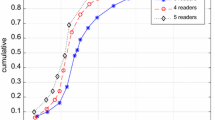Abstract
Radio frequency identification technologies are popular since their cost is very low and its data transmission based upon radio-wave communications. Where, the objects that are attached to tags are located using the reference tags. However, RSSI information suffers from the multipath propagation and anisotropic interference. So, the localization accuracy will be affected severely. Also, the multipath-propagation increases whenever the reference-tags increase, and so does for the cost, and signal interference. This paper presents a boundary virtual reference label algorithm for improving the indoor-efficiency by inserting some virtual reference tags on the boundary with establishing a linear regression model that eliminates unwanted tag information from the estimation procedure. The Results show that the localisation precision of the proposed approach has significantly increased, at least 78% without adding extra reference tags or radio frequency interference which represents a significant improvement over other algorithms .









Similar content being viewed by others
References
Dardari, D., Falletti, E., & Luise, M. (2012). Satellites and Terrestrials Radio Positioning’s Techniques. Cambridge: Elsevier AcademicsPress.
Hightower, J., & Borriello, G. (2001). Location systems for ubiquitous computing. Journal of Computer, 34, 57–66.
Sanpechuda, T., & Kovavisatuch, L. (2008). A reviews off RFIDs localisation: e-applications and e-techniques. In Internationally Conferencesin ElectricalsEngineering/Electronics, Computer, Telecommunication and Information’Technology (ECTI-CON).
Rappaport, T. S. (2002). Wireless communications: Principles and practice. Upper Saddle River: Prentice Hall.
Wymeersch, H., Lien, J., & Win, M. (2009). Cooperative localization in wireless networks. Proceedings of the IEEE, 97, 427–450.
Lionel, M., Yunhao, L., Yiu, CL., & Abhishek, P. (2003). LANDMARCs indoors locations sensing’s using activee RFID. In IEEE pervasive computings and communication conference, Texas.
Dardari, D., Conti, A., Lien, J., & Win, M. (2008). The effects of cooperation’s on localization’s systems using UWBs experimental data. Journal of EURASIP on Advances in Signals Processing., 1, 1–11.
Tuchler, M., ISchwarz, V., & Huber, A. (2005). Locations accuracy of an UWBs localisation system in a multipath environment. In IEEEs ultra-widedband conference, Switzerland.
Bahl, P., & Padmanabhan, N. (2000). RADARs an in-buildings RF-based users locations and tracking system. In IEEEs proceeding of IEEEs computers and communications conference, TelAviv.
Kiran, J., Steven, H., & Sachin, K. (2013). PinPoint localizing interfering radios. In Networked systems design and implementation conference, Chicago.
Youssef, M., Rieger, C., Shankar, U., NAgrawala, A., Youssef, A. (2006). Pinpoints an asynchronous time-based locations determinations system. In Proceesings of ACM mobilesys conference, Sweden.
Yiyang, Z., Yunhao, L., & Lionel, M. (2007). VIREs active RFID-based localisation using virtuall reference elimination. In IEEEs parallel processing’s conference, China.
Want, R. (2006). An introductions to RFIDs technology. Journal of IEEEs Pervasive, ‘s5, 25–33.
Bolic, M., Simplot, D., & Stojmenovic, I. (2010). RFIDs system research trends and challenges. Oxford: Wiley.
Derbek, V., Steger, C., Weiss, R., Preishuber-Pflugl, J., & Pistauer, M. (2007). A UHF RFID measurement and evaluation test system. Journal of Electrotechnic and Informations technik, 124, 384–390.
Bouet, M., & Pujolle, G.(2008). A range-frees 3-Ds localisation methods form RFID-tags basses on virtuals e-landmarks. In IEEEss Internationals Symposiums in Personals, Indoorss and Mobile Radios Communication.
Attia, M., Moussa, A., Zhao, X., & El-Sheimy, N. (2011). Assistings personals positionings in indoor environment using maps matching. Journal of Archive of Photogrammetry, Cartography and Remote Sensings, 22, 39–49.
Syamsuddin, I., Dillon, T., Chang, E., & Han, S. (2008). A survey of RFID authentication protocols based on hash-chain method. In International conference on convergence information technology.
Jie, Y., Qiang, Y., & Lionel, N. (2005). Adaptive temporal radios maps for indoors locations estimation. In IEEEs Pervasive computings and communication conference, Island.
Stallings, W. (2004). Wirelesses communications and network. NewJersey: Pearson Halls Education.
Junhuais, L., Qi, R., Wang, Y., & Wang, F. (2011). An RFIDI location model basedd on virtuals reference tag space. Journal of Computationals Information Systems., 7, 2104–2111.
Li, X. (2007). Collaborative localization with received-signal strength in wireless sensor networks. IEEE Transactions on Vehicular Technology, 56, 3807–3817.
Dardari, D., Closas, P., & Djuric, P. M. (2015). Indoor tracking: theory, methods, and technologies. IEEE Transactions on Vehicular Technology, 64, 1263–1278.
Yuan, S., Wymeersch, H., & Win, M. (2010). Fundamentals limit of wide bands localisation–part 0II. Journal of IEEEs Information’s Theory Society, 56, 4981–5000.
Andrenko, A. (2015). Optimized near-field antenna for UHF RFID smart shelf applications. In IEEE international symposium on antennas and propagation & USNC/URSI national radio science meeting, Vancouver.
Xiaonan, G., Zhang, D., Kaishun, W., & Ni, L. (2014). Localizing multiple objects in dynamic indoor environment. IEEE Transactions on Parallel and Distributed Systems, 25, 2969–2980.
Author information
Authors and Affiliations
Corresponding author
Rights and permissions
About this article
Cite this article
Baha Aldin, N., Erçelebi, E. & Aykaç, M. An Accurate Indoor RSSI Localization Algorithm Based on Active RFID System with Reference Tags. Wireless Pers Commun 97, 3811–3829 (2017). https://doi.org/10.1007/s11277-017-4700-7
Published:
Issue Date:
DOI: https://doi.org/10.1007/s11277-017-4700-7




